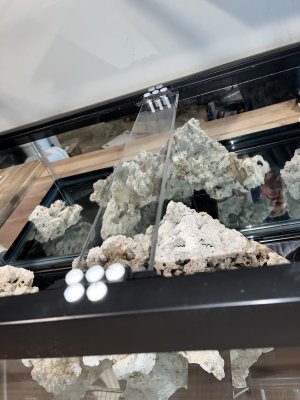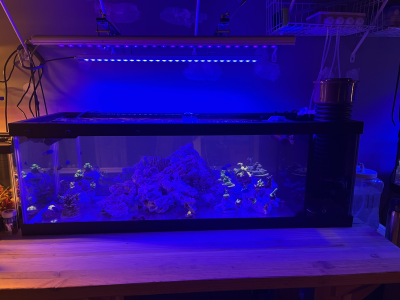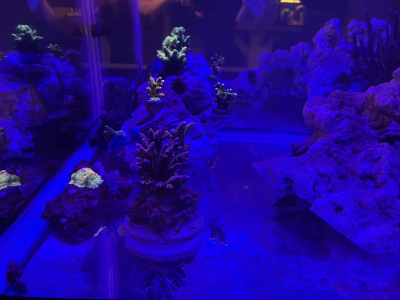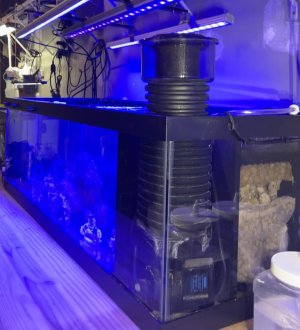I'll apologize in advance for this post being a bit wordy, but I promise it'll be worth the read...
First a little background. I got into saltwater tanks somewhere in the mid to late 80's, right about the time wet/dry filtration started making a presence to marine hobbyists. I bought a hang on wet/dry filter for my first saltwater tank (29g) for $500. Plus I had to buy canister filter to return the water to the tank.
I was fascinated by this filter and it was huge! Made of acrylic it measured 24" left to right, 30" top to bottom and 2" thick. It was filled with about 25lbs of crushed coral and had a surface skimmer box with a siphon tube to get the water into the filter. I was fascinated with this thing, it trickled water over the crushed coral increasing the surface area of water to air.
True to form, one tank just wasn't enough, I wanted another but...I didn't have another $500 to spend. On top of that the aquarium stand I had would only let me fit a 20g long tank on the bottom shelf. On top of all that, there was no way a huge hang on the back filter was going to fit. The more I looked at the filter and how it operated I had an idea that I could make a wet/dry filter that would fit inside the 20g tank.
While I worked on my design, I consulted the local marine shop owner that I bought the fancy filter and all my live stock from. Back then live rocks were a big thing. The main challenge with the hobby back then was that most of the research was coming out of Germany, if you didn't read German, you were out of luck. Luckily the shop owner I paired up with read/spoke German and had some connections with folks in the hobby back in Germany.
Here's a drawing of the design I came up with, I used this to investigate getting a patent.
View attachment 86040
I finally built a prototype and set it up, worked so well that I built 12 more filters and set up 12 more tanks to further test the effectiveness in different sized tanks. I selected 5 marine shops on the west coast to start and was up to 30 shops by year end selling my filters. I handled all the production myself and produced these in-the-tank wet/dry filters for 3 years then sold the company. Funny thing, most of those first 5 shops all told me that no one would go for an all-in-one tank. I pride myself on being one of the early pioneers in the all-in-one tank craze that eventually lead the industry to major expansion in later years...
What I learned about in this adventure is the effect of dissolved oxygen in the nitrogen cycle. More water surface to air meant more dissolved oxygen which in turn speeds up the nitrogen cycle. In more recent times wet dry filters have become know as nitrate factories and have fallen in popularity for reef tank filtration. I have used this filterer or some variant of it in all my tanks over the years from a 2.5g to a 150g, I just run the media chamber wet now.
Now for the reason I've gone into my history of wet/dry filtration and dissolved Oxygen. While planing this tank, I couldn't help wondering if some wet/dry filtration and increased dissolved oxygen could help this tank produce nitrate. In all my frag tanks over the past several years I have been dosing 10-20mg of Nitrate daily just to keep my nitrates at 5ppm. If I could create an environment that my filter chamber would actively breath fresh air in and out, maybe I wouldn't have to dose Nitrates (as much) as I did in past tanks.
It took some trial and error but using my gyres in alternating gyre mode to increase water entering the media chamber seemed the best option. Only time will tell as I get this tank fully stocked and I can monitor nitrate levels and the need to dose or not...
Here's a video of how the water level fluctuates in the media chamber, it changes by a 2" margin. As the water level drops, fish air is pulled in through the sponge exposing it and some matrix to air. When the gyre cycle reverses, the water level rises pushing all the air back out through the sponge. The effect is like the chamber is breathing. Im curious to see what effect this has on Nitrate levels in the tank.
















